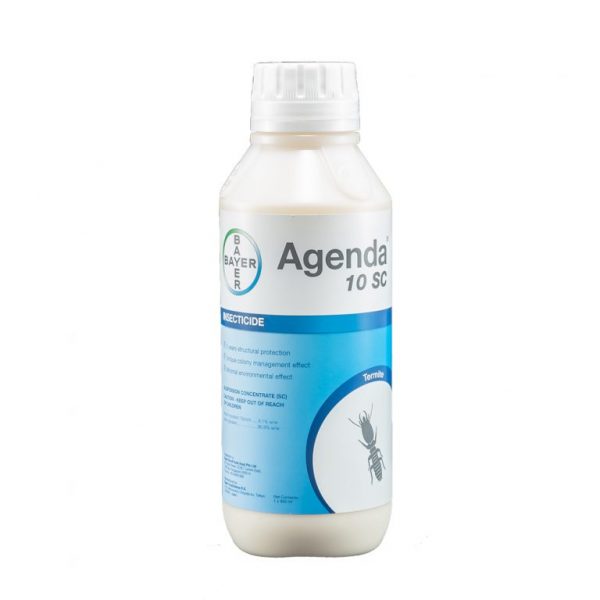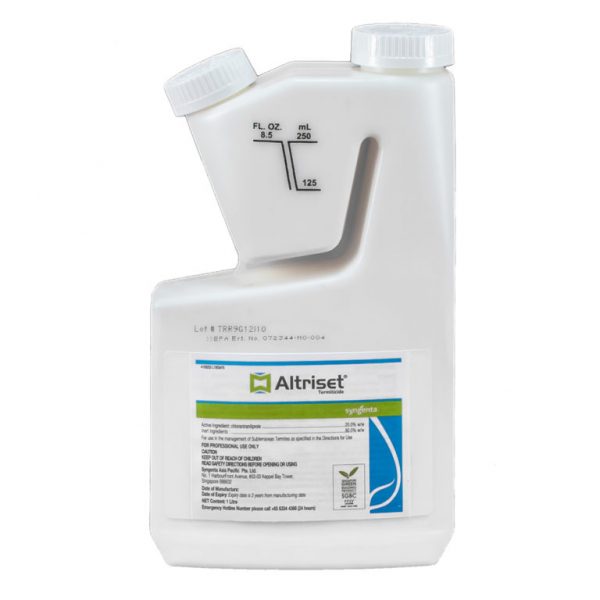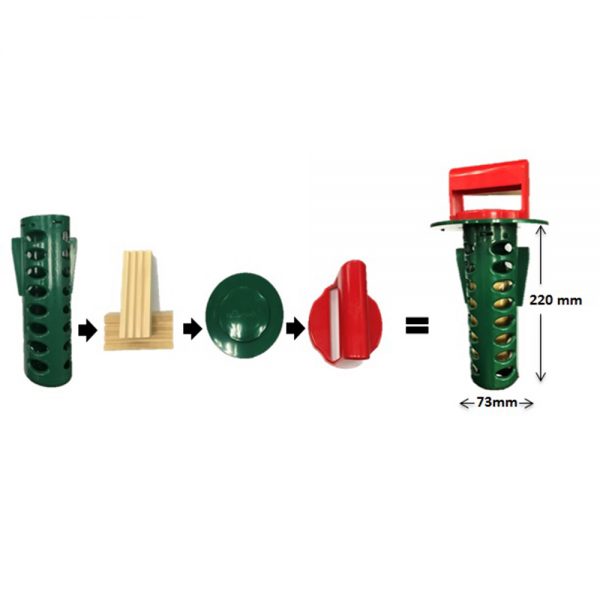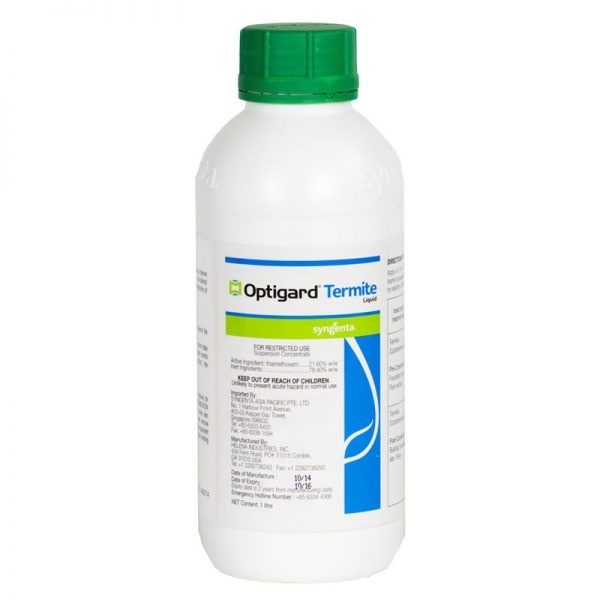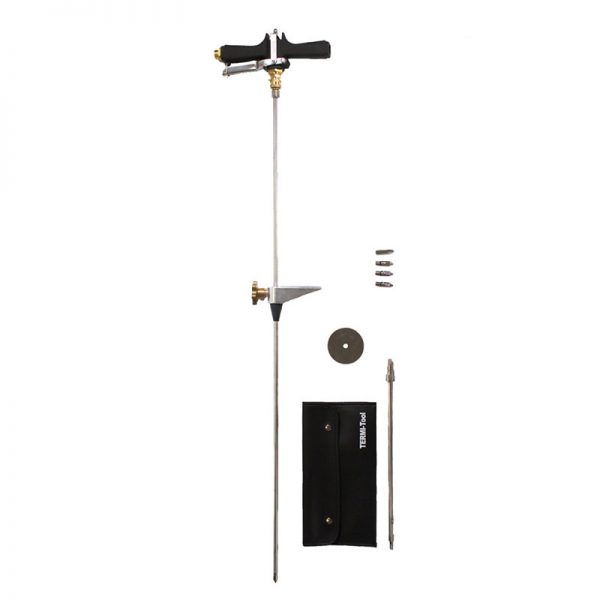DRYWOOD TERMITES
DRYWOOD TERMITE FACTS
Termites also known as 白蚂蚁 or white ants, are silent destroyers. The 3 most common groups of termites found in Singapore are subterranean termite (Coptotermes spp.), drywood termite (Cryptotermes spp.) and dampwood termite (Neotermes spp.).
Subterranean termites are by far the most destructive species of termite as they eat 24 hours a day, 7 days a week. Termites feed on anything that contains cellulose material found in wood. In buildings, they create galleries in the wood, which weakens the timber and causes unsightly structural damage.
Subterranean termite, Coptotermes gestroi, causes approximately 90% of termite-related damage in Singapore, making them the most worrisome pest species. This damage, however, often goes unnoticed for many years. Because they slowly eat away at the wood inside your home, often without your knowledge, termite damage often severely impacts the structural integrity of your home.
Termites can infest buildings at any time. This can lead to costly costly damages when left untreated and be particularly troublesome when buying or selling a home.

METHOD OF TREATMENT FOR DRYWOOD TERMITES
Protecting your property from termite infestation using termiticide remains the most effective method in termite management. An eco-friendly, safe, and effective termite control can be achieved by applying soil barrier treatment and termite baiting system.
The 5 to 7 years Termite Protection Program using Altriset, Agenda, Premise and Optigard Termite Liquid can be applied for soil termite barrier treatment which is also known as pre or post construction treatment. In most cases, termiticide application can only be properly performed by a trained pest management professional.
Soil termite barrier treatment can be applied as:
1) Pre-construction treatment (Soil Treatment) – Arguably, this is the best way to carry out termite protection during the construction phase of a structure or building. Treat the soil with a non-repellant termiticide on the soil before the concrete slab is layed. Our termiticides bind strongly with the soil for long lasting protection and reduce the risk of termiticide leeching into the environment.
2) Post-construction treatment (Corrective treatment) – A thorough inspection is performed on the premises to understand the the termites activities which affect the property owner. The aim is to produce a treated zone between the property and subterranean termites to control the above and below ground termites. It requires drilling holes on floor slab (on pillar, along the perimeter of the walls, around pipings, or locations where subterranean termites most likely will attack) at regular intervals and injecting diluted liquid termiticide into the holes to create a termiticide barrier under and around building.
3) Termite Baiting control has evolved significantly in recent years, and termite bait treatment has been popularised versus the conventional soil termite barrier treatment. It is non-invasive to your property (drill free), typically costs lesser compared to injection methods and is an environmentally friendly defence against termite infestations. Termite baiting employs a very different approach where it consists of cellulose material, combined with a slow-acting insecticide which disrupts the normal growth process in termites. Within weeks of ingesting the bait, termites die while attempting to molt. The delayed-action enhances transmission of the lethal ingredient to nest mates through trophallaxis, including those that never fed direct on the bait. Entire colonies can be eliminated in this manner. Warranty of treatment may vary in services offered by pest management professional.
Exterminex™ is one of the most attractive termite baits available. A Natural form matrix containing a highly refined most preferred physical form of alpha cellulose base that is fortified with alluring compounds and feeding stimulants. It is easy to install and preferred by most property owners.
What Should You Do? It is important to seek professional advice once termite infestations are detected. Termites are hard to control as they are colony insects and crytic in nature. Most off-the-shelf products such as aerosol only deal with termites on the surface and not the main colony which is source of the infestation. Effective termite pest control measures such as termite baiting, soil termite barrier (pre and post construction treatment) would require trained pest management professionals.

SIGNS OF DRYWOOD TERMITE INFESTATION
Secretive and destructive, most subterranean termites are crytics in nature and they do not forage in the open. Subterranean termites connect their colonies in the soil underground to their above-ground food sources via mud tubes or create galleries in woods. When signs of termite damage surface, there has often been an infestation for years with extensive damage already sustained.
Some signs of a termites in your home/ premises include:
1) Termite mud tubes
2) Hollowed and damaged furniture, carpet, wall and floor
3) Tight fitting and hard to open doors and windows
4) Sighting swarms of winged termites or termite alates
5) Discarded termite wings near the windows, doors and other home access points

TYPES OF TERMITES
Termites can be classified under three groups:
1) Drywood Termites
Drywood termites are a pest of drywood (e.g. structural timber in buildings). They do not rely a lot on moisture sources and do not need soil for survival.
2) Dampwood Termites
Dampwood termites often feed on decayed food from rotting logs, timbers buried or stumps of old trees.
3) Subterranean Termites.
Subterranean termites, on the other hand, construct their nests in the soil and heavily rely on moisture for survival. They utilise mud tubes to prevent dehydration when they travel above ground to search for cellulose food sources. Subterranean termites are the most damaging to buildings and structures, among the three groups of termites described.
The species of subterranean termite which commonly attacks buildings and structures is Coptotermes gestroi. This species is a cryptic species and they do not build mounds. Hence, it is often difficult to determine their presence because they forage under the soil, unless a complete termite monitoring system is set up around the building. Coptotermes gestroi contribute about >90% of all subterranean termite attacks. Other major subterranean termite species are the mound-building species, such as Macrotermes carbonarius, Macrotermes gilvus, and Globitermes sulphureus. These mound-building termite species do not attack buildings or structures often, and contribute less than 10% of the total attacks from subterranean termites.
In a termite colony, there are immatures (nymphs and larvae), alates (swarmers), reproductives, soldiers and workers. Worker termites are the most abundant in the colony and they are involved in gathering food, feeding other castes, grooming, making tunnels and excavating the nests. Soldier termites are involved in colony defence and usually gather at the opening of the nest or mud tubes for defence.
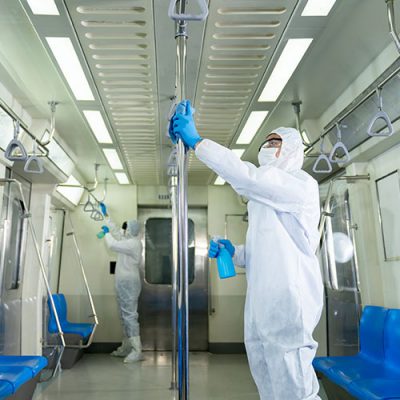

 CHEMICALS
CHEMICALS